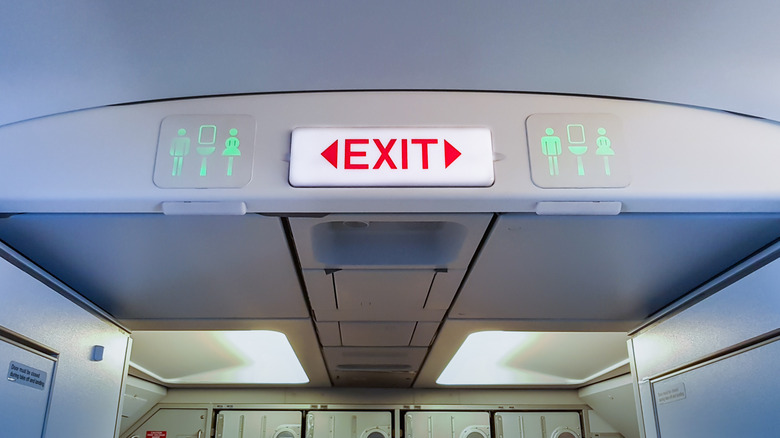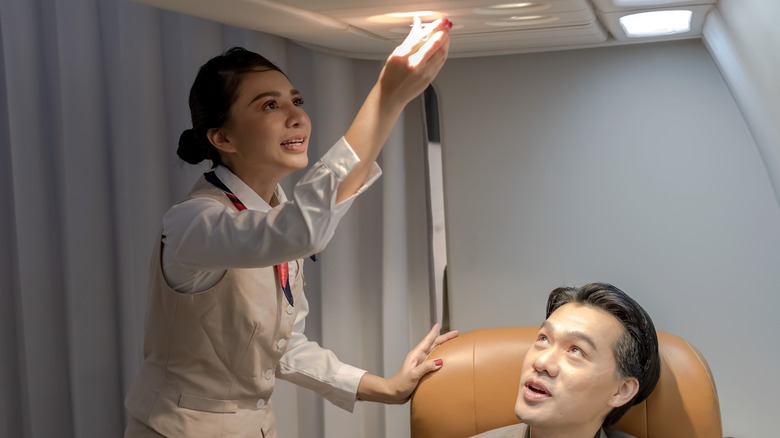What Do Those Cabin Lights On A Flight Actually Indicate?
If you're flying in the near future, take a moment to thank your flight attendant for all that they do to keep their passengers safe. They deal with quite a bit beyond serving beverages and handling the dramatic passenger outbursts we've been seeing in the news. You may not know it, but flight attendants don't get paid until the plane door closes, meaning they're probably just as upset as you are with any delays. They have to keep an eye out for the disturbing signs of human trafficking. They also have practices you may not notice, like sitting on their hands during takeoff and landing in a brace position, so they can be ready to assist passengers.
Another thing you may not know about is the color code of cabin lights during a flight. You may see a strip of them near the jump seats, around the plane's exit signs, and in the galley. This is the Area Call Panel (ACP) — also called the Attendant Indication Panel (AIP) or Master Call Light Panel, depending on the plane. The ACP gives flight attendants information about where and what they're needed for during the flight. There may also be chimes involved along with the lights, and different types of aircraft have different systems. That means you may not always be able to decipher what they mean, but some codes are fairly common; you can get a pretty good indication of what's happening if you pay attention.
Light and chime codes on the Area Call Panel
When you see the ACP, whether on the exit sign or in the galley, you may notice a blue light. If it's on, that usually indicates that a passenger has pressed the call button at their seat. You may notice more than one blue light, which can indicate the side of the plane the passenger is seated on. In some airplanes, you may see the seat number as well. If you see a steady orange or amber light, it's an indication that the call button has been pressed in one of the restrooms. In that case, there may also be a light over whichever restroom the call is coming from. However, if the orange or amber button is flashing, someone's been naughty — that happens when the smoke alarm is triggered.
If you see a pink light that is not flashing, it's a call from one flight attendant station or galley to another. However, if it's flashing, that can indicate that there is a group call that all the flight attendants need to join over the intercom. (It can be a green light on some planes.) If you see a red light, that's a call from the flight deck. Again, chimes may go along with these lights, which can help the flight attendants know that a light is on if they're engaged in another activity. It can also indicate something else, like the altitude the plane has reached or turbulence, though the codes can vary by aircraft. That said, don't try to read too much into the chimes, as they could be something completely benign, like indicating that the seat belt sign has been turned on.

